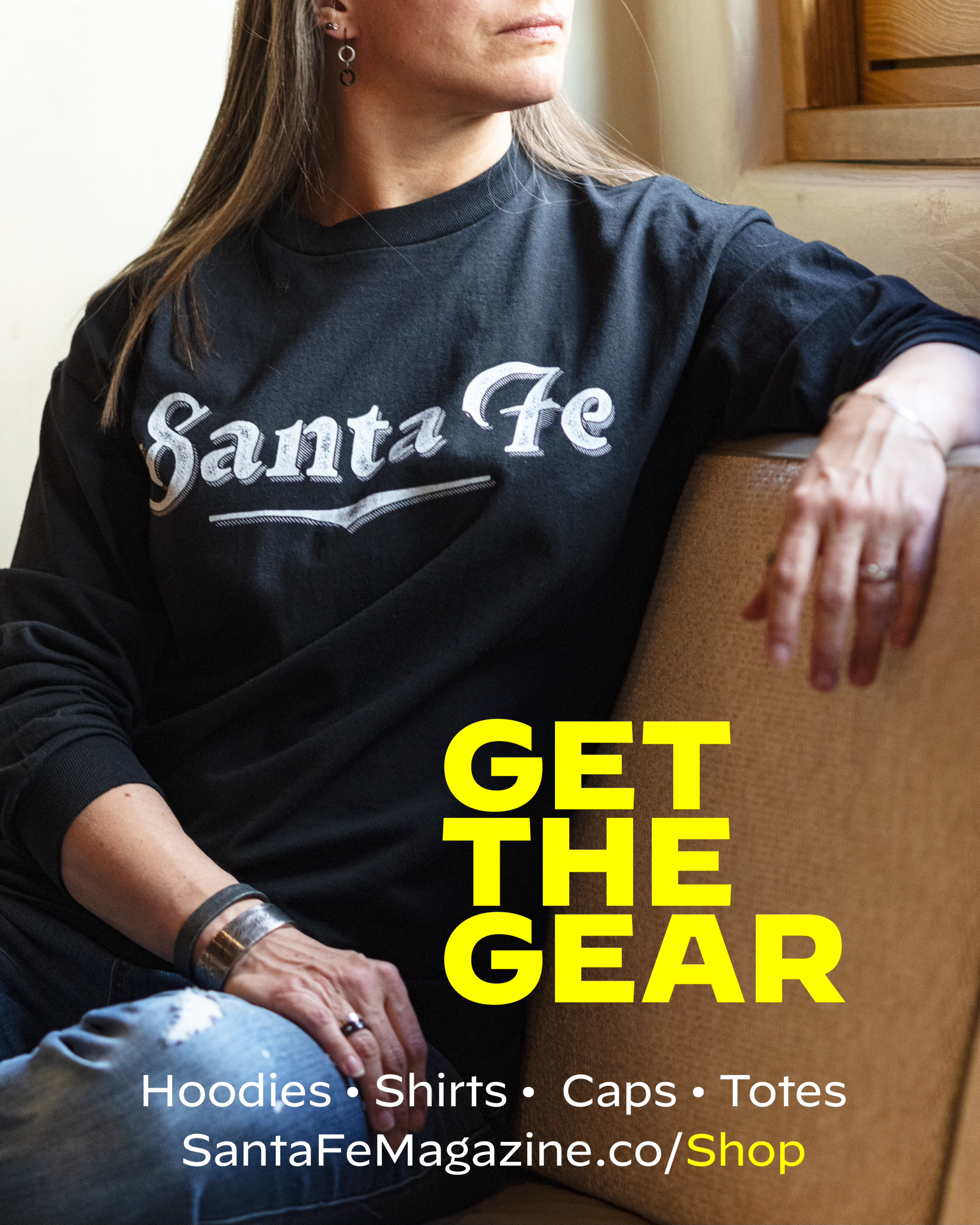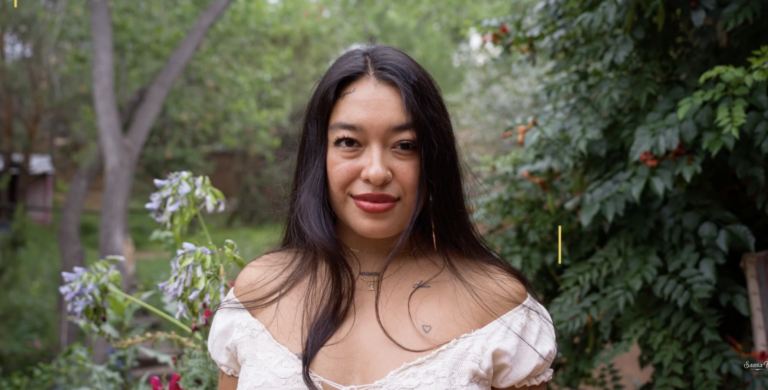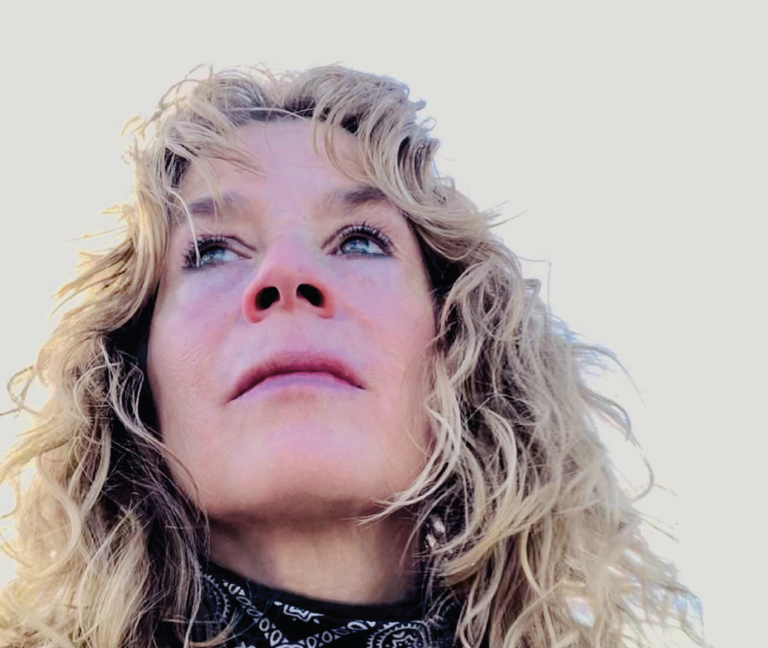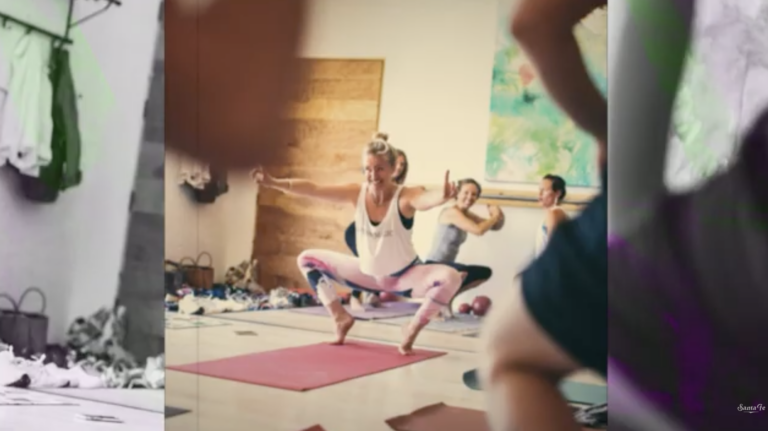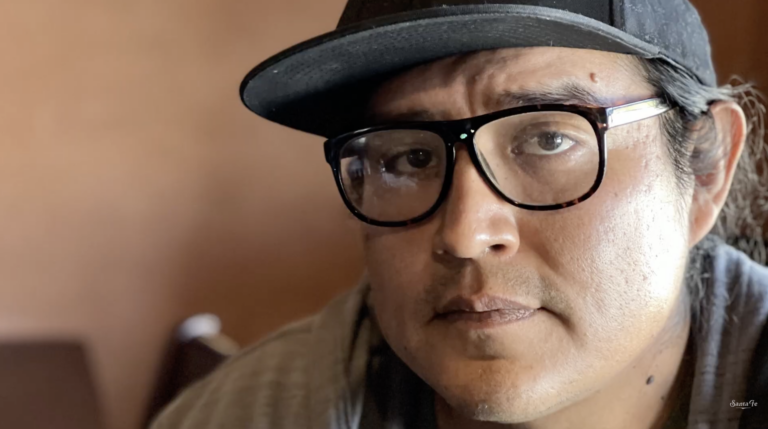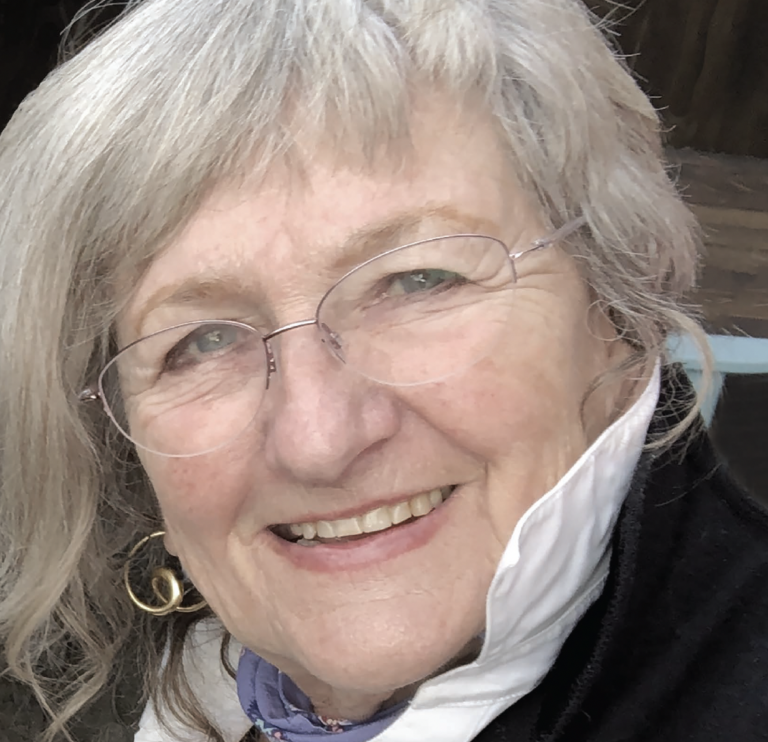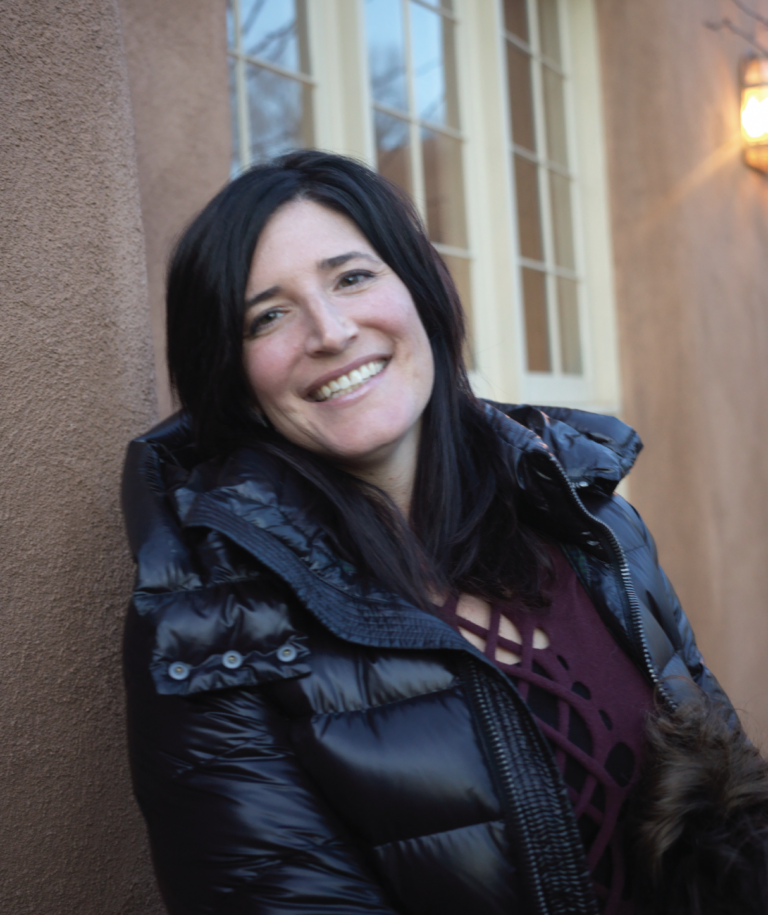I MET SABA AT BEAR CREEK BAR. We sat in the corner near a window. He was a young man of 38, brown eyes with thick glasses. He was hesitant to talk at first. I picked up the pizza at the bar. We dug in. We talked about our families.
And then he began to tell a story. His voice was rhapsodic, lit with reflection, amusement, and sadness. His language was strange and eloquent.
The story he told was appalling. What he did was heroic.
“Water is life.”
Three important words.
He explains: “After running graffiti and going to jail for it when I was 13, I was still putting my name everywhere. I was approached by longtime family friends. Our people were delivered these legal court documents asking us to give up our water rights forever.
“We had two weeks to tell every chapter of the Navajo nation. We set up a set of town meetings to let people know their vote counts. We were desperate. We had to get the word out; they had to remind people that they were voting for water. That was the first time anybody ever asked me to use graffiti for good.
“So we put ‘water is life’ on every water tank, gas tank, and dilapidated building. We went from town to town. When we would arrive in the next town, there was a box of spray paint, food, anything we wanted. We were like instant rock stars on rez. I could not believe we were painting during the middle of the day on billboards in front of police stations.
“And every time we did it, it was followed up by some kind of natural phenomenon like rains or snows in the middle of the summer. It was ridiculous.”
Tell us about your graffiti.
I hit 13, and an older cousin of mine, Roach Clip, moves back from Los Angeles. He’s the direct connect, the source to the graffiti culture that still runs in this world and in LA.
Graffiti culture?
It’s like, the Watercolor Society of America. There’s probably some Watercolor Society of America that has so many network streams that it’s ridiculous. They all get together one once a year at, I don’t know, watercolorville. They’ll paint watercolors together.
Graffiti culture is basically hip-hop mafia. And the only way you get to pass is through your style and the work you put in on the streets.
What is graffiti?
Google it; it’s writing on somewhere you’re not supposed to write on.
Is it the act of that or is it how good the work is?
Both. And whether you really do both well, or one or the other. You get notoriety as either a bomber or a piecer. Yeah, there’s a whole language.
Bomber is somebody who runs around and does bubble letters like bombs.
Sometimes you can’t even read it. It’s just black and white. Just bombs, they just really want to vandalize and show that they vandalized. A piecer will do something beautiful with the same momentum as the bomber. So naturally the piecer will get recognized more because of the time and technique that they put into their piece.
Which are you?
I am just a human. I am practicing ancient graffiti known as petroglyphs or Neoglyphics, pictographs, hieroglyphics, all that stuff. A hundred years from now and probably after this interview, our graffiti will be protected by the federal government, just like my ancestors’ graffiti is protected south of Albuquerque in the Petroglyph National Monument.
But back to your question. I refer to myself as an arrow soul artist because a graffiti artist was not our term that we coined for ourselves. Kind of like Indian.
I’m not an Indian, I am Dine, but it’s easier and you understand what I’m saying when I say I’m an Indian. When I say I’m a graffiti artist, you’re like, Oh, you’re one of those guys. When I say I’m an arrow soul artist, you’re like, What the fuck is that? It’s just aerosol spray paint, right? Yeah, I’m like no. Arrow, as in bow and arrow, Soul. Arrow soul artist.
But lately, people have been calling me “that arrow soul ambassador.” Arrow soul is what I have classified myself as in coining my title. Whoa, if you think about an arrow, what is it used for? Direction. But it’s also used for nourishment, hunting, and probably (the most popular), defense. Only because it has a super sharp, sharp tip, it’s very threatening, which graffiti culture is and hip-hop and the whole movement of social justice and higher levels of understanding oneself. And then the soul, the soul part is what we are nourishing, what we are protecting and the direction that we have been going for infinity. Before hip-hop even was a conscious movement, that’s what the Indians were doing and still are doing today. We practice and pray to our deities that also keep the world turning. [laughs] And so I call it future old school. The practice of the whole movement, the meshing of old and new.
I don’t hunt deer with my tribe because I’m not allowed on my own land to go hunt the deer we’ve been hunting forever without some paper that says, “Hey, you can go hunt.” So now I got to go hunt tax savings with my art. This arrow soul, that’s my weapon. It’s myself, my family, my soul, my ancestors, my everything. Because I’m just doing exactly what they would be doing.
Tell me about the work. Does it work monetarily? Does it work spiritually? Does it work as a support?
All of the…all of that…everything you said.
So how do you get paid, say?
I do commissions. I do graphic designing, screen printing, branding, mural painting. You’re getting paid to do what you’ve done on the streets for years. And to me it’s still fucking weird. You’re not supposed to even know me. So that’s what was cool: back in the day, when I would go and paint the streets at night and went home with the bags, got up for school or got up for work and just did my part, nobody knew I painted.
Do you know what it’s going to look like before you do it?
I got an idea. Some people sketch them and take them, but its dark; you can’t even see it. That’s unbelievable pressure. Just getting bit by the dog is terrible.
Just to do something, to practice your art form for free. If I didn’t steal the paint, I had to pay for it. So, the tremendous pressure, like Why the fuck am I doing this? Because I have to, and this piece will be seen throughout the country, by the people that admire the rolling gallery that goes to their city.
The best part is the next morning. You get to see who it is you brought home from a greasy, grimy bar. Just kidding, but that’s how it feels. Regardless, you had a good time, whether she or the train or your plans didn’t work out. At least you had a good time doing it.
You are married…
Shawna, mother of my children and still my wife for 20 years. We left our hometown together. Hometown being Farmington. I was fatherless, addicted to everything. Just had to get out. She stayed with me through the worst. We decided to leave when I got off probation. I got caught for doing graffiti when
I was young. So naturally, they took that away. That’s when I got heavily into drugs and alcohol and kind of went on my Indian destiny. I’m thankful that I was taught by the best, learned from the best, ended it with the best – early.
We left to Albuquerque, where I reunited and reconnected with some graffiti artists from the past but also witnessed it there in Albuquerque. I found the real community of hip-hop. I became involved, started throwing shows and catering to my community rather than just destroying it. But if you do both at the same time, it’s a balanced set. I think that’s how we’ve been maneuvering, and I still continue to listen to my wife on deals like this or deals like anything.
We have three beautiful children: 17, six, and two years old. She’s supported my addiction in hip-hop culture.
Graffiti addiction?
Graffiti is an addiction. It’s something you keep doing when everybody tells you to stop.
What happened when you got caught?
Jail time, which then slingshotted me into the prison process or pipeline. When I went into jail, it was just like a camp, a summer camp because all the kids I hung out with were getting their stripes. I just fell into that world because, again, it’s a powerful world.
How old were you?
13.
What were you drawing?
Everything, everywhere. Walls, buildings, box trucks, everything; you name it.
We didn’t have trains up in Farmington, so we had to drive to Gallup.
How long were you in jail?
At that time, there wasn’t laws for it at all, in my little town. We had to do restitution. The most terrible thing I remember doing was this thing called Grade Court, which is comparatively the same shit as drug court. When these drug addicts have to go to extra court every week to get piss tests and all these counseling things, all kinds of stuff for a 13-year-old. During the week, I had to get all of my teachers to sign my homework. Write anything: that he acted out this week, blah, blah, blah. The judge will look at that on Friday. If I got a bad review, I had to go to jail for Saturday and Sunday. This is when they put us in the maximum security or the adult cells just to show us and get us comfortable, I imagine, for the prison cells. I started doing better because jail is not a place for me. Shouldn’t be for anyone. There should be other ways of dealing with this.
Now that I look at it, I can’t believe they even did that to us. And if you look at it, San Juan County has some of the highest rates of everything. A lot of it is due to the oil and gas extraction industry. Oil field workers, oil field drillers, all of that. That’s where I was also destined to be. If I wasn’t here right now talking to you, I would probably be on an oil field. That’s where the men go.
It’s awesome making hella money that you can spend or you can spend with your family. You’re just out there grinding, and everybody looks at it like it’s some accomplishment. They’re taught way more than I was – the importance of water. Water is life, it is one part of my life that really turned me into who I am today.
Water?
Water is life. You heard of this movement? You heard of DAPL? The Dakota Access Pipeline, remember that? That’s where “water is life” really got propelled to the world. It’s three important words. You can’t fumble that information.
So, in 2010, after doing graffiti just for fun, writing my name everywhere, I got approached from some longtime relatives, family friends that are into social justice, environmental justice, indigenous justice – more so on the Navajo reservation. From uranium to coal to all these fucking crazy substances that are super, super toxic to everybody – not only the Indians – put me on game.
We were going through water rights settlements with the federal government; New Mexico, Arizona, Utah, and Colorado for the Little Colorado River.
We’re about to give away our rights away forever. Right? In these legal documents, court documents, it says “forever” more than 50 times. We throw around the words “community” and “forever” like a football all day long. But whenever it’s on fucking court papers, it means for and ever.
That’s the message that we had to get out to the people in two weeks. They gave us two weeks to notify the general public that this vote is going down.
Only on the Navajo Nation, and we had to tell every chapter. They were desperate, they had to get the word out. They had to remind the people that were voting for our water, not for the infrastructure. And that was the negotiation on the table: we will give you electricity, water (running water) to your grandma’s house if you write off your rights forever. In the long run, after the 100-year lease is over, we’ll just be left with the desert, deserted desert with no water. That was the first time somebody asked me to use graffiti for the good.
I get to resist in this articulate, beautiful way and get paid for it. It’s amazing. How much shit talk I get to talk because I’m indigenous, first and foremost. Everyone wants to hear from the first-person perspective. I give it to them. This is how it is, at least for me.
That’s when you live in the now. Not everybody. Well, I’m going to take you and we’re going to go tag on this building down the street, you will feel what it feels like. Ha!
Learn more at sabahut.com
Photo SFM

